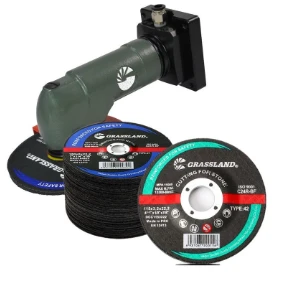Understanding Cut-off Cutting Discs A Comprehensive Guide
Cut-off cutting discs are essential tools in various industries, designed for precision cutting and efficient material removal. They are widely used in metal fabrication, construction, automotive industries, and even by hobbyists for DIY projects. In this article, we will explore the features, applications, and selection criteria of cut-off cutting discs, providing a detailed insight into their importance and usability.
What Are Cut-off Cutting Discs?
Cut-off cutting discs, also known as abrasive discs or cutting wheels, are circular tools made from abrasive materials such as aluminum oxide, silicon carbide, or diamond, depending on the intended application. They are typically used with angle grinders, chop saws, or other high-speed cutting machines to slice through various materials, including metal, concrete, plastic, and wood. The primary function of these discs is to provide a clean, precise cut while minimizing burr formation and material loss.
Key Features of Cut-off Discs
1. Material Composition The abrasive materials used in the discs determine their effectiveness on different substrates. Aluminum oxide discs are suitable for ferrous metals, while silicon carbide is preferred for non-ferrous materials and some stones. Diamond discs are optimal for ultra-hard materials, including concrete and ceramics.
2. Thickness and Diameter Cut-off discs come in various thicknesses and diameters. Thinner discs provide faster cuts, but may wear out quicker and are less durable. Thicker discs, on the other hand, offer greater longevity and are better suited for heavy-duty applications.
3. Bonding Agents The bonding material used to hold the abrasives together influences the disc’s performance. Resin-bonded discs are versatile and widely used, while metal-bonded discs offer durability for high-performance requirements.
4. Speed Ratings Each cut-off disc comes with a maximum rotational speed (RPM) rating, which must be adhered to in order to ensure safety and efficiency. Exceeding this speed can lead to disc failure, posing significant risks to the user.
Applications of Cut-off Cutting Discs
Cut-off discs are utilized in a wide range of applications
cut off cutting disc

- Metal Working Ideal for cutting rebar, metal sheets, pipes, and profiles, these discs are favored in welding and metal fabrication shops. - Construction They play a crucial role in cutting concrete, bricks, tiles, and various masonry materials during building and renovation projects.
- Automotive Industry Used for cutting through vehicle body panels, exhaust systems, and other metal components, cut-off discs are integral to repair and maintenance work
.- DIY and Home Improvement Hobbyists and DIY enthusiasts also benefit from cut-off discs for various home projects, such as metal art or custom furniture creation.
Selecting the Right Cut-off Disc
Choosing the appropriate cut-off disc is essential for ensuring optimal performance and safety. Here are some factors to consider
1. Material Type Assess the material you plan to cut, and select a disc that is compatible with it. 2. Disc Thickness For thinner cuts, opt for a thinner disc; for tougher materials or thicker sections, a thicker disc will provide more durability.
3. Speed Compatibility Ensure that the disc’s speed rating matches the maximum RPM of your tool.
4. Brand and Quality Investing in high-quality, reputable brands can ensure better performance and safer cuts.
Conclusion
Cut-off cutting discs are vital tools across many industries, bringing precision, efficiency, and convenience to cutting tasks. By understanding their features, applications, and how to select the right disc for your needs, you can enhance your cutting projects—whether in a professional setting or at home. Always prioritize safety by following guidelines and using the appropriate personal protective equipment while working with these powerful tools.
Post time:Dec - 13 - 2024

















